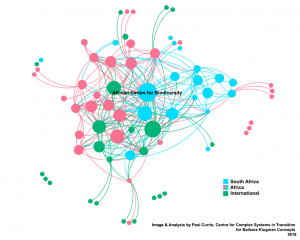‘What is feminist about outcome harvesting?’, Gender and Evaluation, Barbara Klugman, 16Apr2019
At: https://gendereval.ning.com/profiles/blogs/what-is-feminist-about-outcome-harvesting
Rituu suggested I reflect on my practice and also share with you the set of blogs a few outcome harvesting practitioners wrote for AEA365 (attachment) to give a sense of the method and in so doing pay tribute to the method’s originator, Ricardo Wilson-Grau – see attached. So, this note reflects on outcome harvesting as feminist. It is arguably feminist in its because of both its steps and principles (See in the attachment, blog 1 which outlines the steps, and Quinn Patton’s comments on the principles in blog 2; as well as Ricardo Wilson-Grau’s image of the tree which lists the steps and principles.)
Fundamental to a feminist approach is participation – that those affected by an intervention need to be involved throughout the cycle of planning, implementing, evaluating and improving it. Outcome harvesting requires that an evaluation be useful, and that those most involved in an intervention get involved in the shaping of the evaluation and the interpretation of findings. This is not only a utilisation-focused approach, but one that recognizes that in the design itself, those who could be using findings for learning, need to be inputting on the purpose and shape of the evaluation and doing the sense-making along the way with the evaluators.
OH recognizes the need to identify and name collaboration which is an aspiration of feminism. Like other methods steeped in a recognition that social change in complex contexts happens in neither a linear nor predictable way, OH focuses on the contribution of the initiative, looking for a plausible or reasonable explanation of its direct or indirect influence on outcomes rather than seeking to attribute changes in their entirety to the initiative being evaluated. Outcome harvesting draws on systems theory, in particular recognizing the multiple factors may have influenced change. It is not interested in proving that a single intervention caused a change, but rather in tracing back from actual changes that can be observed, to see what the contribution of a particular intervention was, whether directly or indirectly. In addition, it makes it possible to systematically name the role of others in the contribution. Indeed, in the framing of outcome statements, in addition to drafting the outcome and the contribution descriptions, one can draft the ‘contribution of others’ and analyse that to understand if, when and how collaborations have been critical in influencing outcomes.
The following quote illustrates one of the findings of an evaluation that used outcome harvesting among other methods, to get to grips with the influence of collaborations among workers’ organisations, researchers and others involved in building ‘inclusive cities’:
“Everyone has their roles, but combining together these capacities and experiences we were able to meet larger objectives, larger than the sum of its parts or number of people involved. For example, there are people trained in handling media who collaborated with us, people skilled in the lobbying, politics and the ways in which these events take place. There are other people with very strong skills in rallies, protests, organisation, or logistics. The different capacities together made our achievements a reality.” –Silvio Ruis Grisales, RED Lacre, Latin America Regional Network of Recyclers
(From Klugman, B., ‘Global advocacy networks: lessons from the ‘Inclusive Cities’ project and WIEGO, AEA Conference, Denver, 17 Oct 2014)
Having said that, OH is about outcomes; it is not the best method for evaluating the quality of relationships which is why I frequently use it alongside other methods. A feminist evaluation approach is likely to encourage evaluation designers and users to ask questions about power in an initiative and about if and how well it challenges power relations. While OH can pick up outcomes in this regard, interviews, focus groups, workshop conversations or even surveys may be needed as a supplement to get to grips with relationship dynamics.
In my view, feminist practice can be brought to most evaluation approaches; and any evaluation can ask questions of concern to feminism. I am not arguing that OH is better or unique, but for those not familiar with the method, I hope these thoughts encourage you to explore it further.



